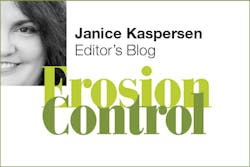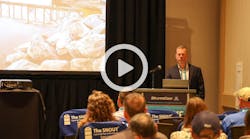
We have an adversarial relationship to fire these days. This year has been one of the worst for wildfires in the US; at various times this fall, more than 2 million acres have been burning at once. The US Fish and Wildlife Service estimated, back in September, that more than 8 million acres and 500 structures had been destroyed so far in 2017, which it considered a lot for a single year. That was before the series of deadly fires in Napa Valley, CA, which together covered more than 200,000 acres and claimed more than 8,400 homes and other buildings.
The Natural Resources Conservation Service and other agencies are stepping up to help those whose properties were affected. NRCS’s Environmental Quality Incentives Program is helping with practices such as “mulching, seeding, grade stabilization, tree planting, and other measures to protect burned areas from eroding and/or minimizing transport of sediment and pollutants into waterways,” including on cropland and rangeland. In all, the agency is projecting that it will spend about $4 million to aid recovery in the Napa Valley area alone. That includes help for the many wineries in the region that were damaged.
That’s all as it should be, but the vineyard owners and grape-growers say they won’t really know the extent of the damage to their crops and businesses for at least another year. The upside is that vineyards don’t burn as readily as forested land, lacking the low-growing understory that fuels so many wildfires. The well-irrigated stretches of land may in fact have acted as firebreaks, as one grower points out here. He says that because the fire hit shortly before the vines entered their annual dormancy period, he’s less concerned right now with the plants themselves than with the soil—adding compost, straw, and other types of cover to prevent erosion, as well as putting wattles in place to prevent soil loss.
Perhaps a greater danger is that people will stop visiting the area—tourism is a major source of revenue—or that they’ll assume Napa Valley wines will be unavailable or more expensive in the coming years. Winery owners advise that one of the best ways to help the region recover is to keep buying local wines, or even to up one’s consumption.
Damaging as the fires here and elsewhere have been, though, it’s sometimes useful to step back and look at them from a different angle. This recent article by John Lanchester, who in turn references James C. Scott’s book Against the Grain, points out that for 95% of human history, we were hunter-gatherers who used fire to great effect: to clear land, to drive animals toward easier hunting grounds, and even to prepare the land for different types of plants that would attract the prey we wanted to hunt. Mastering control of fire was arguably the most important thing we’ve ever accomplished. Remains found in caves illustrate the point:
“The earliest, oldest strata of the caves contain whole skeletons of carnivores and many chewed-up bone fragments of the things they were eating, including us,” writes Lanchester. “Then comes the layer from which we discovered fire, and ownership of the caves switches: the human skeletons are whole, and the carnivores are bone fragments. Fire is the difference between eating lunch and being lunch.”
It might not be a great help to those in Napa Valley at the moment, but it’s something to contemplate with your next glass of pinot noir. Feel free to share your own experiences of remediating fire-damaged soils in the comments.
StormCon 2018 Call for Papers Is Open
StormCon, the conference exclusively for stormwater and surface-water professionals, is seeking abstracts for presentation at StormCon 2018, which will take place in Denver on August 12–16, 2018. The deadline for submitting abstracts is Wednesday, December 6, 2017.
We are accepting abstracts in six conference tracks: Stormwater Infrastructure and Best Management Practices; Green Infrastructure; Stormwater Permit Compliance; Funding, Staffing, and Managing the Stormwater Program; Industrial Stormwater Management; and Research and Testing. For descriptions of the tracks and more information about submitting an abstract, please visit www.StormCon.com.
About the Author
Janice Kaspersen
Janice Kaspersen is the former editor of Erosion Control and Stormwater magazines.

